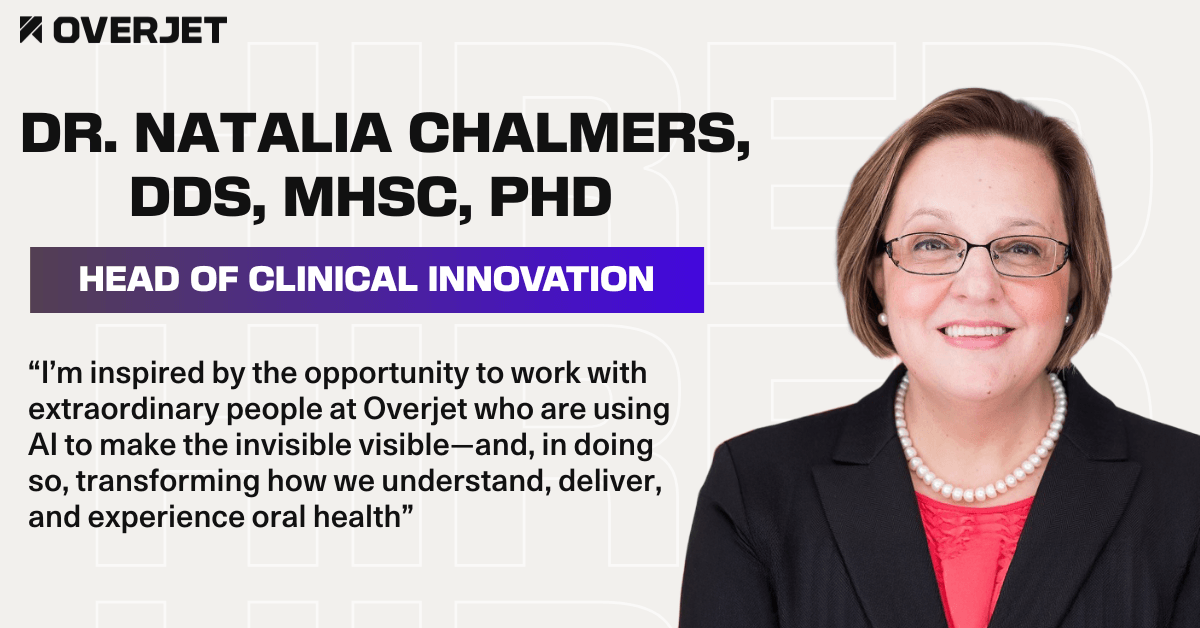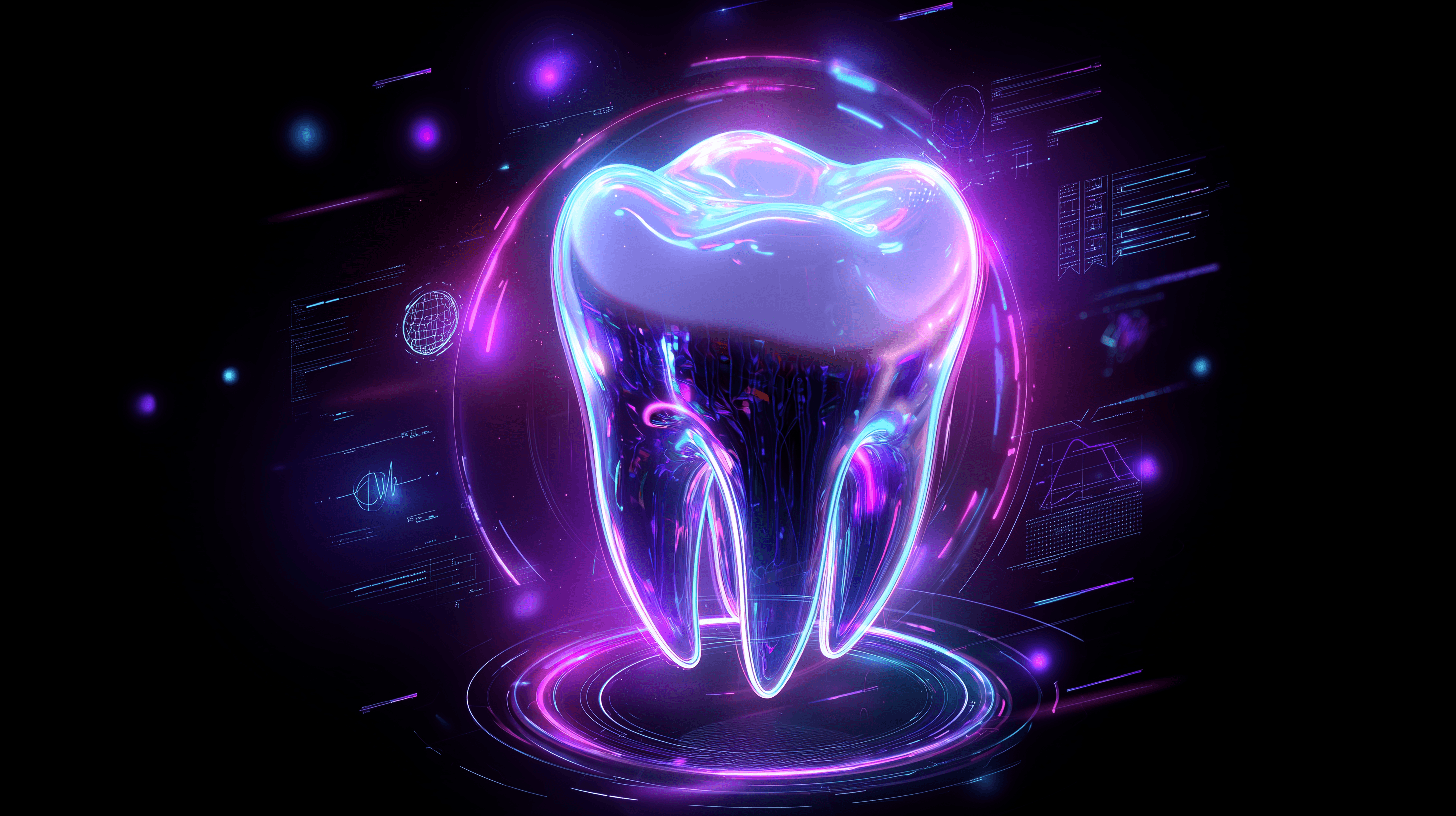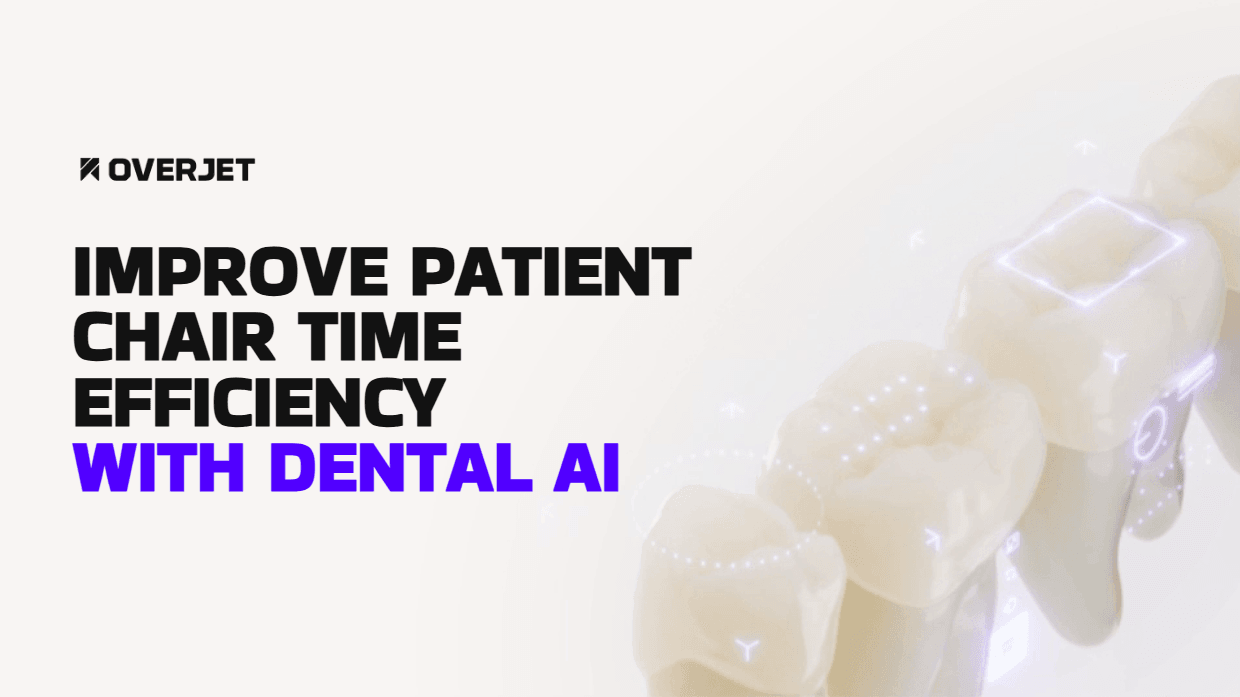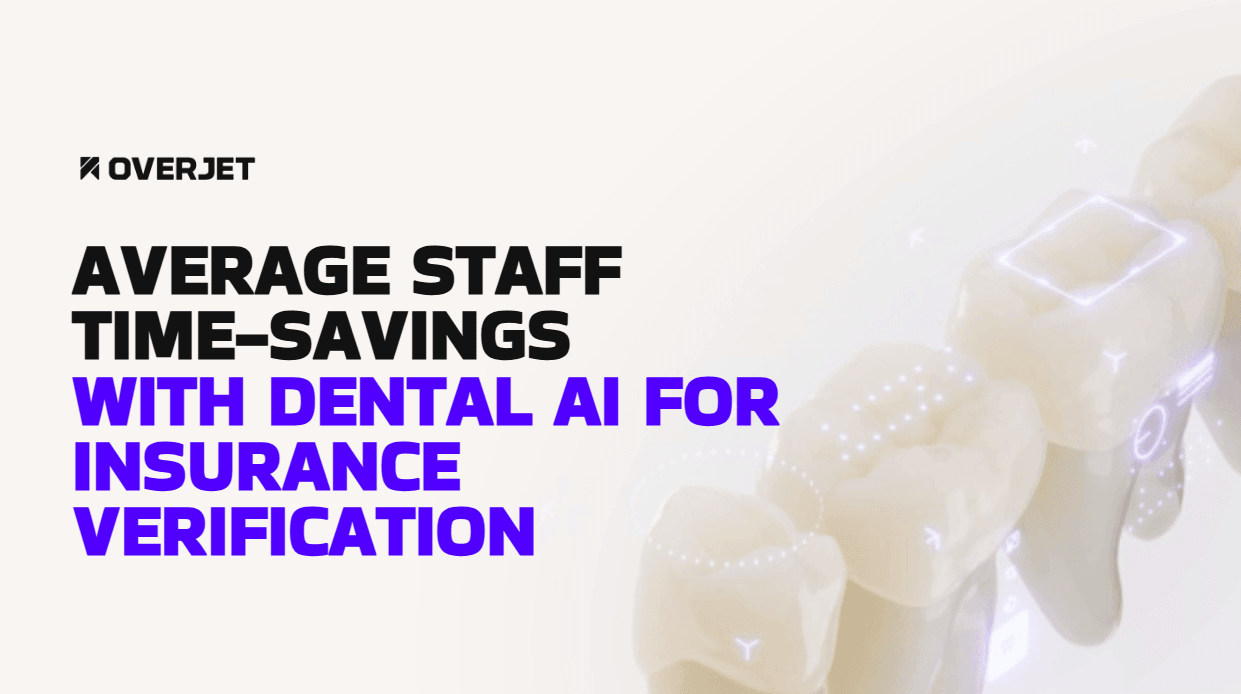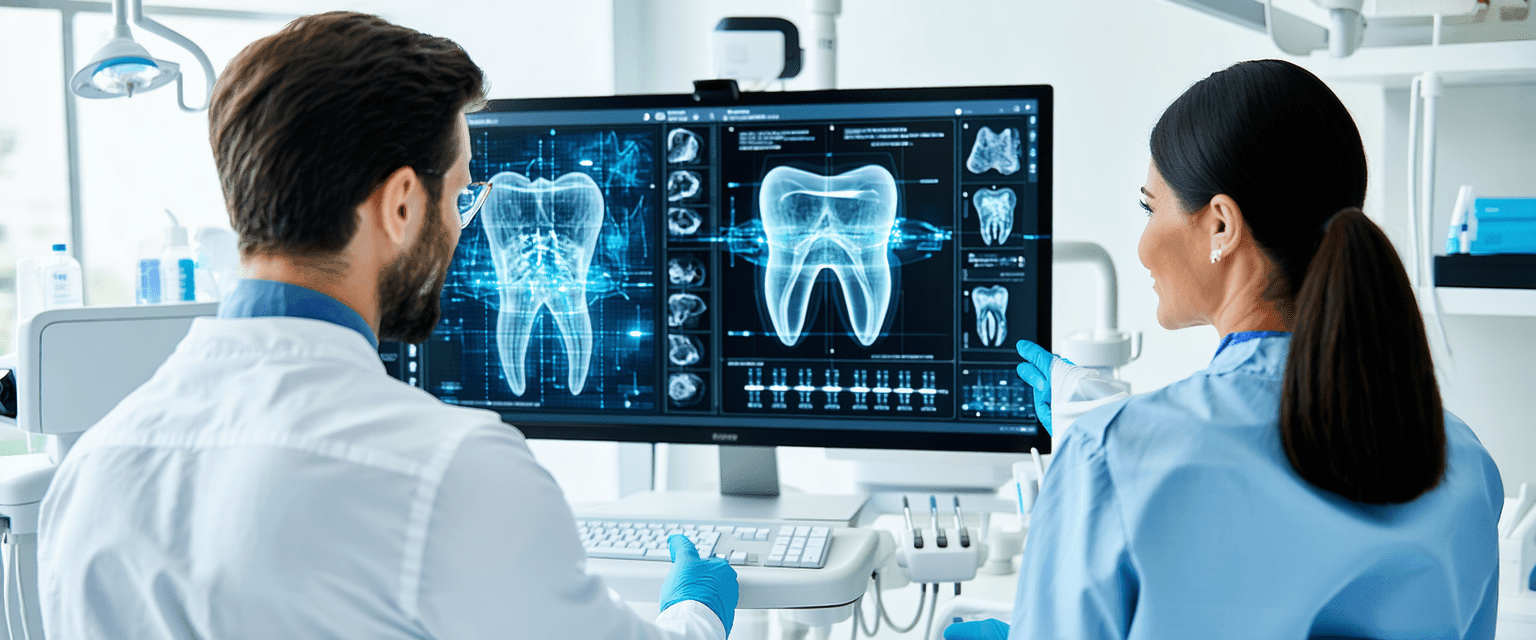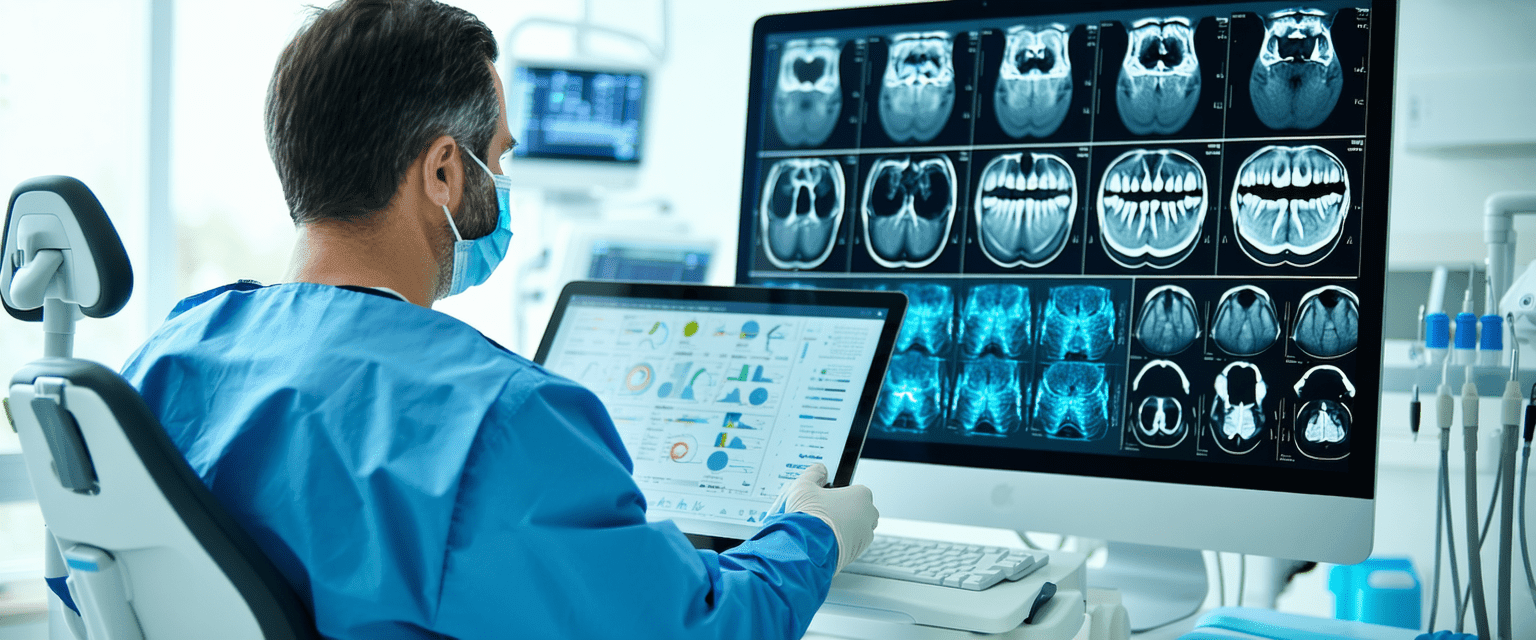Dental imaging systems are the backbone of diagnosis, treatment planning, and patient communication in modern dentistry. As technology has advanced, so has the precision and speed of these systems—paving the way for artificial intelligence (AI) to elevate imaging from a diagnostic tool to a smart clinical assistant.
At the forefront of this shift is Overjet Dental AI, the industry’s most advanced platform for AI-powered dental imaging. From private practices to national DSOs and insurers, Overjet is transforming how imaging is used across the dental ecosystem.
What Are Dental Imaging Systems?
Dental imaging systems are technologies that capture visual data to aid in identifying oral health conditions and planning treatments. These systems allow clinicians to detect caries, assess bone levels, plan implants, and monitor changes over time—making them central to comprehensive, data-driven dentistry.
They’re used across preventive care, restorative procedures, endodontics, orthodontics, and oral surgery. Imaging is also essential for documenting cases, supporting patient communication, and providing defensible records for insurance and compliance.
Explore Overjet's AI Dental Imaging
Common Types of Dental Imaging Systems
Dental practices rely on a range of imaging systems to diagnose conditions, plan treatments, and communicate effectively with patients. Understanding the distinct types and use cases for each imaging modality is essential for choosing the right tools based on clinical needs and practice goals.
Intraoral Imaging
Intraoral systems capture highly detailed images from inside the mouth and are essential for routine exams and targeted diagnostics.
Bitewing Radiographs: Commonly used to detect interproximal caries and assess bone levels for periodontal evaluation.
Periapical X-rays: Provide detailed views of the tooth root and surrounding bone—critical for diagnosing abscesses, root fractures, and for endodontic planning.
Occlusal Radiographs: Offer a wider view of the full arch, helping evaluate tooth development and alignment.
Extraoral Imaging
Extraoral systems capture broader anatomical structures, often in a single image.
Panoramic X-rays: Deliver a full-arch overview useful for wisdom teeth, impacted teeth, and jaw evaluations.
Cephalometric X-rays: Primarily used in orthodontics to analyze jaw relationships, alignment, and growth patterns.
3D Imaging (CBCT)
3D dental imaging, or Cone Beam Computed Tomography (CBCT) provides high-resolution, three-dimensional imaging for advanced diagnostics.
Ideal for implant planning, sinus lifts, surgical guides, and complex pathology
Offers accurate visualization of bone density, root anatomy, and nerve pathways
Photographic Imaging
Intraoral and Extraoral Cameras: Used to capture visual records for case documentation, lab communication, and patient education.
Each imaging system plays a unique role—and when enhanced with AI tools like Overjet, these systems become even more powerful in delivering accurate, efficient, and patient-centered care.
Key Challenges with Traditional Imaging Systems
While dental imaging technology has made significant strides, many practices still face critical limitations with traditional systems—especially when used without intelligent support. These challenges can affect diagnostic accuracy, treatment efficiency, and patient experience.
One of the most persistent issues is subjective interpretation. Even with high-quality digital radiographs, diagnostic outcomes can vary based on the clinician’s experience, fatigue, or interpretation style. This variability becomes especially problematic across multi-provider or multi-location practices where standardization is crucial.
Traditional imaging systems also rely on manual processes that can slow down workflows. Analyzing a single 2D X-ray takes time, and reviewing a full CBCT scan—often comprising hundreds of slices—can significantly increase chair time and strain clinical capacity.
Another barrier is patient communication. Many patients struggle to understand grayscale radiographs, and without clear visual aids, they may feel uncertain or skeptical about treatment recommendations. This can hinder case acceptance and reduce trust in care.
Additional concerns include:
Lack of diagnostic consistency across providers and locations
Increased risk of missed pathology, especially when findings are subtle or easily overlooked in a busy clinical setting
These challenges highlight the need for intelligent support tools that can standardize analysis, enhance clarity, and improve diagnostic confidence. This is exactly where AI platforms like Overjet make a transformative impact—elevating traditional imaging into a modern, data-driven clinical asset.
How AI Is Transforming Dental Imaging Systems
Artificial intelligence (AI) is not a replacement for traditional imaging—it’s a powerful enhancement that turns radiographs into actionable, data-rich tools. By analyzing images in real time, AI functions as a clinical co-pilot, helping dental teams detect pathology faster, standardize diagnoses, and communicate more clearly with patients.
Rather than relying solely on subjective interpretation, AI leverages millions of data points to deliver objective, consistent insights that support better clinical decisions across all types of imaging—from 2D bitewings to advanced 3D CBCT scans.
Key Benefits of AI-Enhanced Dental Imaging:
Real-Time Pathology Detection: AI flags signs of caries, bone loss, and other abnormalities instantly, improving early detection and reducing oversight.
Automated, Quantitative Analysis: Precise measurements (e.g., bone levels) are delivered without manual calculations, reducing error and boosting clinical efficiency.
Standardized Diagnostics: Especially important for DSOs and multi-provider practices, AI ensures consistent analysis across locations and teams.
Visual Overlays for Patients: Annotated images make complex findings easier for patients to understand, improving case acceptance and trust.
Streamlined Workflows: With real-time insights, practices can move from diagnosis to treatment planning faster—often within the same appointment.
With AI, every scan becomes more than an image—it becomes a smart, clinically validated decision-making tool. And with Overjet leading the way in FDA-cleared AI for caries detection and bone level measurement, dental teams can confidently deliver care that’s faster, clearer, and more consistent.
Why Overjet Leads in AI-Enhanced Dental Imaging
When it comes to AI in dentistry, Overjet sets the industry standard. As the first and only dental AI platform FDA-cleared for both caries detection and bone level measurement, Overjet delivers the clinical validation and reliability that practices, DSOs, and insurers can trust. Its technology goes beyond enhancement—it redefines how imaging is used in real-time diagnostics, performance monitoring, and patient communication.
Overjet’s platform transforms traditional 2D radiographs, such as bitewings and periapicals, into dynamic diagnostic tools that provide instant visual overlays highlighting areas of concern. These AI-generated annotations help providers diagnose more confidently—and help patients understand their conditions more clearly.
What Sets Overjet Apart:
Real-Time AI Overlays: Automatically highlight caries and bone loss on radiographs, supporting faster, more accurate diagnoses during the patient visit
Consistent, Objective Insights: Standardize diagnostics across providers and locations, reducing variability in large group practices and DSOs
Provider Performance Dashboards: Track diagnostic accuracy and trends to support credentialing, compliance, and quality initiatives
Patient-Friendly Visuals: Enhance case presentation and increase treatment acceptance by making pathology easy to see and understand
Seamless Integration: Works with leading practice management and imaging software, ensuring minimal disruption to existing workflows
Today, Overjet is trusted by top DSOs, private practices, dental schools, and insurance organizations—making it the most scalable and future-ready AI solution in the dental market.
Whether you're modernizing imaging workflows or standardizing care across your network, Overjet delivers the intelligence and impact to lead with confidence.
Choosing the Right Imaging + AI Platform for Your Practice
As dental technology evolves, selecting the right imaging and AI solution is critical to maximizing clinical efficiency, diagnostic accuracy, and overall patient care. With so many systems and vendors available, practices and DSOs must evaluate platforms not only for their features—but for their ability to integrate seamlessly and drive measurable results.
When choosing an imaging system enhanced by artificial intelligence, there are several key factors to consider:
What to Look for:
Interoperability: The platform should work with your existing imaging hardware and software, avoiding costly replacements or workflow disruptions.
Clinical Validation: FDA clearance ensures the AI is clinically safe and accurate for diagnostic use—not just an overlay or visualization tool.
Ease of Integration: Look for a solution that fits naturally into your team’s daily workflow, without adding complexity or time.
Speed and Reliability: Real-time insights should be fast, consistent, and accessible at the point of care.
Training and Support: Ongoing onboarding, education, and troubleshooting support are essential for adoption and long-term success.
Overjet checks all of these boxes—and more. As the most clinically validated dental AI platform on the market, Overjet helps practices achieve new levels of diagnostic precision, boost case acceptance through visual patient engagement, and streamline operations through intelligent automation.
Whether you're a single-location office or a growing DSO, Overjet provides the scalable, smart solution to elevate your imaging strategy and improve care delivery from day one.
Future-Proof Your Imaging with Overjet
Dental imaging is no longer just about capturing visuals—it’s about unlocking real-time clinical intelligence. With AI from Overjet, practices can go beyond traditional interpretation and deliver faster, smarter, and more consistent care.
Whether you're modernizing a solo practice, optimizing a multi-location DSO, or preparing students for real-world diagnostics, Overjet is the platform to lead your imaging strategy into the future.
👉 Ready to elevate your dental imaging systems with AI?
Ready to see AI Dental Imaging in Action?
Frequently Asked Questions (FAQs)
1. What is the difference between 2D and 3D dental imaging systems?
2D imaging (like bitewings and periapicals) captures flat, limited-angle views of the teeth and bone, whereas 3D imaging (such as CBCT) provides volumetric scans that offer greater detail and spatial accuracy for complex cases like implants and surgical planning.
2. How does AI improve dental imaging systems?
AI enhances imaging by analyzing radiographs in real time, detecting pathology, automating measurements, and providing visual overlays that support faster diagnoses and clearer patient communication. It reduces subjectivity and improves consistency across providers.
3. Is Overjet compatible with existing dental imaging software?
Yes. Overjet integrates seamlessly with most major digital imaging and practice management systems, allowing practices to implement AI without overhauling their existing infrastructure.
4. Is Overjet only for large DSOs or can smaller practices use it too?
Overjet is scalable and supports practices of all sizes—from solo providers to national DSOs. Its tools are designed to enhance diagnostics, streamline workflows, and improve patient outcomes regardless of practice size.
5. What types of imaging does Overjet currently support?
Overjet is FDA-cleared for caries detection and bone level measurement on 2D radiographs, including bitewings and periapicals. It is actively expanding its capabilities to support advanced 3D imaging workflows.



